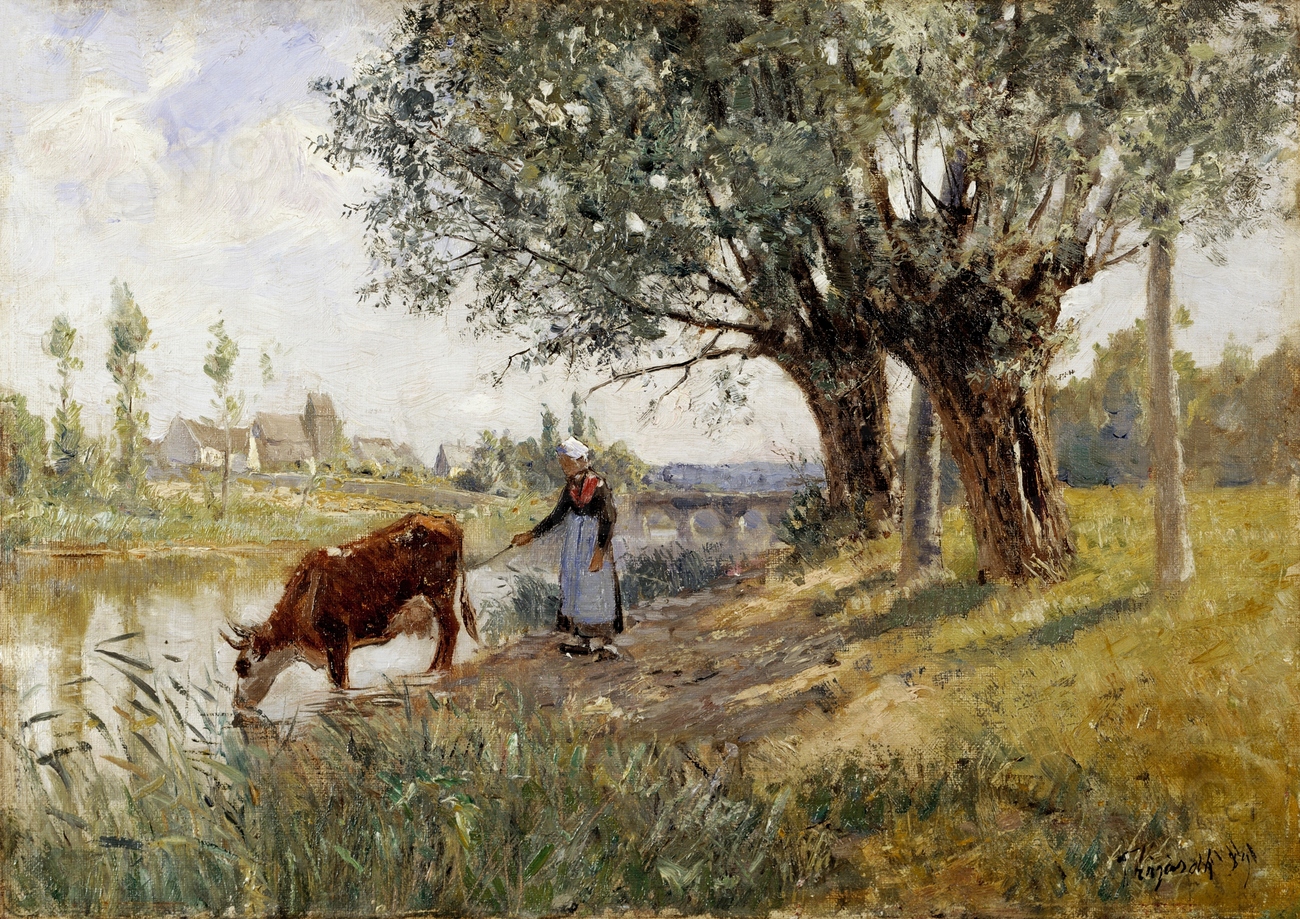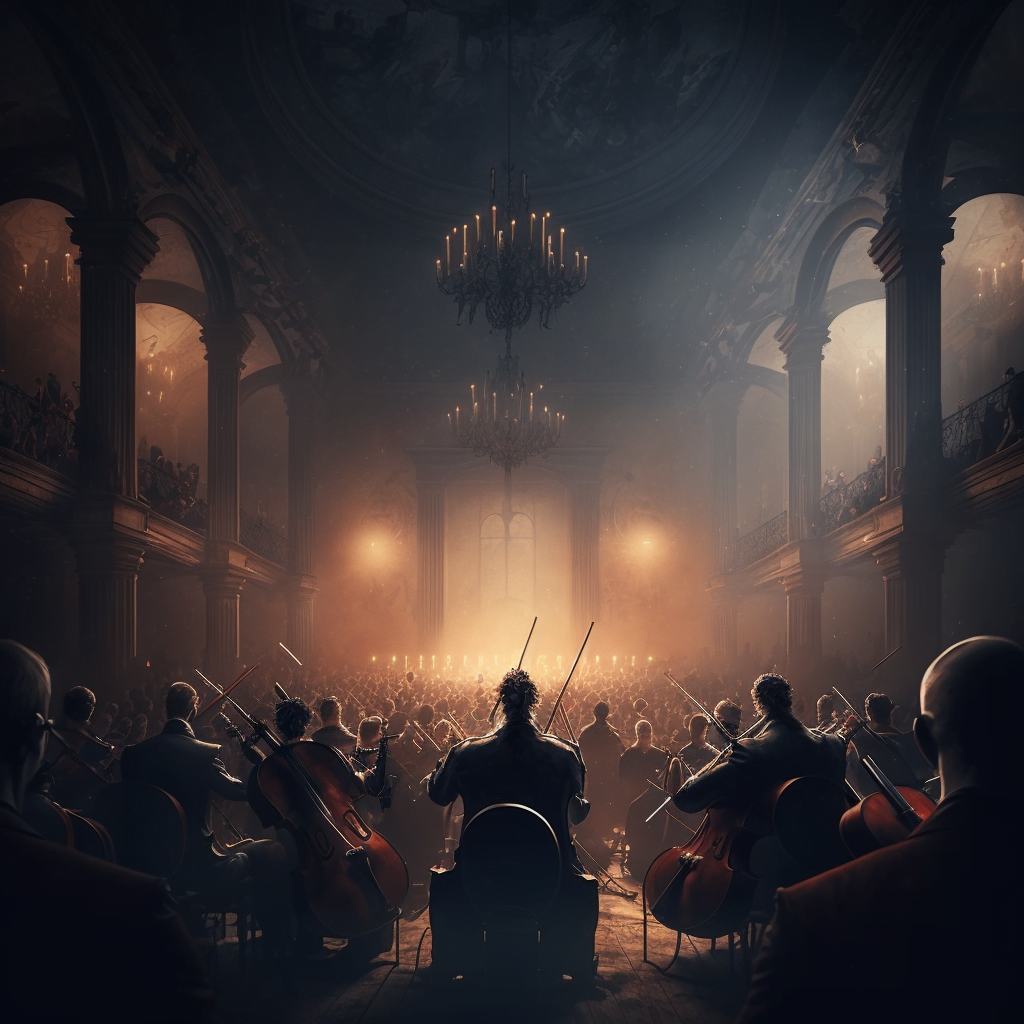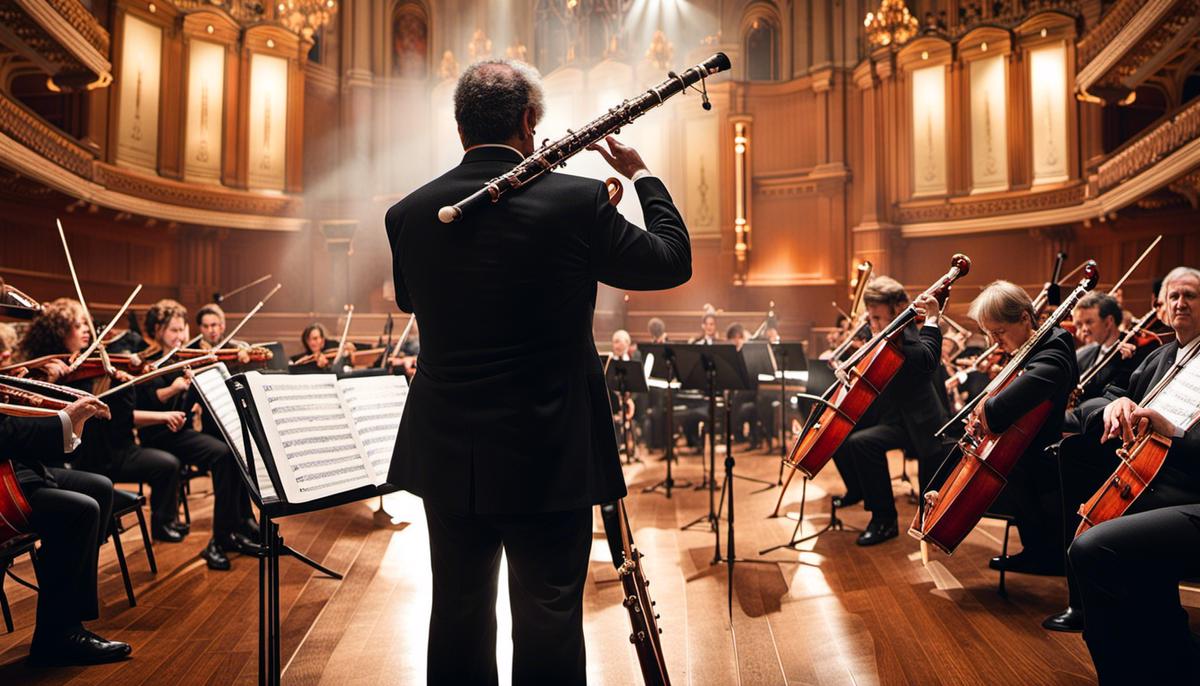Table of Contents
Introduction
Bach vs Beethoven vs Mozart. Who is the better composer?
Johann Sebastian Bach, Ludwig van Beethoven, and Wolfgang Amadeus Mozart are three of the most famous and influential composers in the history of classical music. Each of these composers created a unique and enduring body of work that has continued to captivate and inspire audiences around the world for centuries.
In this article, we’ll take a closer look at the lives and music of Bach, Beethoven, and Mozart, comparing and contrasting their styles, techniques, and contributions to the world of orchestral music.
Johann Sebastian Bach
Johann Sebastian Bach was a German composer and musician who lived from 1685 to 1750. He is widely regarded as one of the greatest composers in the history of Western music, with a body of work that includes over 1,000 compositions across a wide range of genres and styles.
Bach’s music is known for its intricate counterpoint and technical mastery, with many of his works featuring complex fugues, canons, and other contrapuntal techniques. He was also a master of musical form, creating works that ranged from simple minuets and preludes to complex multi-movement cantatas and concertos.
One of Bach’s most famous works is his Brandenburg Concertos, a set of six concertos for various combinations of instruments that showcase his innovative and inventive approach to orchestration. These concertos feature a wide range of instrumental combinations, including strings, winds, brass, and harpsichord, and incorporate a variety of styles and genres, from dance forms to instrumental character pieces.
Another famous work by Bach is his Mass in B Minor, a monumental choral work that took him over 20 years to complete. This mass features a wide range of musical styles and forms, including chorales, fugues, arias, and recitatives, and showcases Bach’s mastery of vocal and instrumental writing.
Ludwig van Beethoven
Ludwig van Beethoven was a German composer and pianist who lived from 1770 to 1827. He is often regarded as one of the most important figures in the transition from the Classical to the Romantic era, with a body of work that includes nine symphonies, numerous piano sonatas, and other works across a variety of genres.
Beethoven’s music is known for its emotional intensity and innovative approach to musical form and structure. He was a master of both instrumental and vocal writing, creating works that featured virtuosic solos, complex harmonies, and dramatic contrasts of mood and tempo.
One of Beethoven’s most famous works is his Symphony No. 9 in D minor, Op. 125, also known as the “Choral” Symphony. This symphony features a full chorus and four soloists, along with a large orchestra, and includes the famous “Ode to Joy” melody in the final movement. The symphony’s innovative use of the human voice and its powerful emotional impact have made it one of the most beloved works of orchestral music in history.
Another famous work by Beethoven is his Piano Sonata No. 14 in C-sharp minor, Op. 27, No. 2, also known as the “Moonlight” Sonata. This sonata features a hauntingly beautiful melody in the first movement, along with complex harmonies and rhythmic devices that showcase Beethoven’s innovative approach to musical structure and expression.
Wolfgang Amadeus Mozart
Wolfgang Amadeus Mozart was an Austrian composer and pianist who lived from 1756 to 1791. He is widely regarded as one of the most gifted and versatile composers in the history of Western music, with a body of work that includes over 600 compositions across a wide range of genres and styles.
Mozart’s music is known for its melodic beauty, elegance, and technical skill. He was a master of both instrumental and vocal writing, creating works that ranged from intricate solo piano pieces to grand operas and symphonies.
One of Mozart’s most famous works is his Symphony No. 40 in G minor, K. 550. This symphony is known for its dark, brooding mood and complex harmonies, and has been a favorite of audiences and performers alike for centuries. Another famous work by Mozart is his opera The Magic Flute, K. 620, which features a wide range of musical styles and forms, including arias, duets, and ensembles, and showcases Mozart’s skill at creating music that is both beautiful and emotionally expressive.
Comparing and Contrasting Bach vs Beethoven vs Mozart
Personal Life and Biography
Bach, Beethoven, and Mozart had different personal lives and biographies. Bach was primarily known as a church musician and had a large family, with many of his family members also being musicians. Beethoven struggled with hearing loss later in his life, which had a profound impact on his music and personal life. Mozart was a child prodigy who composed from a young age and had a meteoric rise to fame, but he died at a young age of 35, leaving behind a legacy of remarkable compositions.
While Bach, Beethoven, and Mozart are all considered giants of classical music, they each have distinct styles and approaches to composition that set them apart from one another.
Bach is known for his technical mastery and complex contrapuntal writing, often incorporating intricate fugues and canons into his works. His music is often characterized by its precise and intricate structure, with each part carefully interwoven with the others to create a complex and beautiful whole.
Beethoven, on the other hand, is known for his emotional intensity and innovation in musical form and structure. He often incorporated surprising and dramatic shifts in mood and tempo into his works, creating music that was both emotionally powerful and technically challenging. His symphonies, in particular, were groundbreaking in their use of the orchestra to create complex and powerful soundscapes.
Mozart, meanwhile, was known for his melodic beauty and elegant style, often incorporating graceful melodies and harmonies into his works. His music is often characterized by its lightness and charm, with a focus on creating beautiful and memorable melodies that are both technically challenging and emotionally expressive.
Similarities
- Musical Genius: Bach, Beethoven, and Mozart are all considered musical geniuses, each making significant contributions to the development of Western classical music. They were masters of their craft and left behind an extensive body of work that continues to be revered and studied by musicians and musicologists today.
- Innovation and Experimentation: All three composers were known for their innovation and experimentation in their music. They pushed the boundaries of the musical forms and styles of their time, creating new and groundbreaking compositions that expanded the possibilities of music. They were known for their inventive harmonies, melodic structures, and intricate counterpoint.
- Prolific Output: Bach, Beethoven, and Mozart were incredibly prolific composers, producing a large number of works across various genres and forms. They composed in multiple styles and genres, including orchestral music, chamber music, choral music, keyboard music, and vocal music. Their extensive output demonstrates their incredible productivity and creative output.
Differences
Time Period and Historical Context: Bach lived during the Baroque period (1600-1750), Beethoven during the Classical period (1750-1820), and Mozart during the Classical and early Romantic periods (1750-1791). Each composer was influenced by the musical styles, forms, and conventions of their respective time periods, which is reflected in their compositions.
Musical Style: Bach’s music is known for its complexity, meticulous craftsmanship, and deep religious themes. His works are characterized by intricate polyphony, contrapuntal techniques, and rich harmonic language. Beethoven’s music is known for its emotional intensity, powerful expressiveness, and bold harmonic language.
His works often feature dramatic contrasts, dynamic extremes, and innovative formal structures. Mozart’s music is known for its elegance, beauty, and lyricism. His works are characterized by graceful melodies, balanced structures, and exquisite craftsmanship.
Comparing Compositions
Let’s compare Johann Sebastian Bach’s “Mass in B Minor” with Ludwig van Beethoven’s “Symphony No. 9 in D minor, Op. 125,” also known as the “Choral Symphony.” These two compositions represent two different eras in classical music, with Bach representing the Baroque period and Beethoven the Romantic period. Despite the differences in style and historical context, both works are considered monumental masterpieces that have had a lasting impact on classical music.
- “Mass in B Minor” by Johann Sebastian Bach: Composed in the 18th century, Bach’s “Mass in B Minor” is a monumental work that is often considered the pinnacle of Baroque sacred music. It is a Catholic Mass setting, but unlike other Masses of the time, it was not composed for a specific occasion, but rather as a comprehensive summation of Bach’s compositional style and religious beliefs. The Mass is divided into four major sections: the Kyrie, Gloria, Credo, and Sanctus, with additional sections for the Agnus Dei and Dona nobis pacem.
- Musical Style: Bach’s “Mass in B Minor” is characterized by its intricate counterpoint, rich harmonies, and elaborate choral writing. It is a polyphonic tour de force, with multiple voices weaving together in intricate and harmonically rich textures. The choral movements are often grand and majestic, with dense harmonies and soaring melodies, while the solo arias and duets showcase Bach’s gift for expressive and virtuosic vocal writing.
- Religious Significance: As a devout Lutheran, Bach’s “Mass in B Minor” reflects his deep religious convictions. The Mass setting is based on the Latin text of the Catholic Mass, but Bach’s Lutheran faith shines through in his use of chorales, which are hymn-like melodies with texts in German. These chorales provide moments of introspection and spiritual reflection, and serve as a powerful expression of Bach’s personal faith.
- “Symphony No. 9 in D minor, Op. 125” by Ludwig van Beethoven: Composed in the early 19th century, Beethoven’s Ninth Symphony is a groundbreaking work that is often considered one of the greatest symphonies in the Western classical music canon. It is a symphony with choral forces, featuring a full orchestra, soloists, and a mixed choir, and is known for its powerful emotional impact and innovative use of the human voice.
- Musical Style: Beethoven’s Ninth Symphony is written in a symphonic style that is typical of the Romantic period, characterized by its expressive melodies, dramatic contrasts, and bold harmonic choices. The symphony is known for its powerful and memorable themes, particularly the “Ode to Joy” theme that is sung by the choir in the final movement. The use of choral forces in a symphony was groundbreaking at the time, and Beethoven’s use of the human voice as an instrument of expression adds a deeply emotional and spiritual dimension to the work.
- Revolutionary Nature: Beethoven’s Ninth Symphony is considered revolutionary for several reasons. Firstly, it breaks the tradition of the symphony as a purely instrumental genre by incorporating vocal forces, which was a bold departure from the norms of the time. Secondly, the “Ode to Joy” theme in the final movement is a celebration of universal brotherhood and humanity, conveying a powerful message of hope and joy that transcends cultural and societal boundaries. This revolutionary spirit and Beethoven’s bold musical innovations have made the Ninth Symphony a landmark work in the history of classical music.
In summary, while Bach’s “Mass in B Minor” and Beethoven’s “Symphony No. 9” may belong to different historical periods and musical styles, they share many
similarities in their significance and impact on classical music. Both works are monumental masterpieces that have had a lasting influence on subsequent composers and continue to be celebrated and performed today. They both push the boundaries of their respective genres and demonstrate the composers’ innovative approaches to music.
One key difference between the two compositions is their religious context. Bach’s “Mass in B Minor” is a Catholic Mass setting and reflects his deep Lutheran faith through the use of chorales in German. On the other hand, Beethoven’s “Symphony No. 9” is a symphony with choral forces that features the “Ode to Joy” theme in the final movement, which celebrates universal brotherhood and humanity, without any specific religious context. This highlights the different religious backgrounds and beliefs of the composers and the ways in which they expressed their faith through their music.
Another significant difference is the historical context in which the two works were composed. Bach composed his “Mass in B Minor” during the Baroque period, characterized by its intricate counterpoint and elaborate choral writing, while Beethoven composed his “Symphony No. 9” during the Romantic period, known for its expressive melodies and bold harmonic choices. This is reflected in the musical styles of the two compositions, with Bach’s work showcasing his mastery of polyphony and choral writing, while Beethoven’s symphony is characterized by its emotional intensity and dramatic contrasts.
Both works are also notable for their use of choral forces. While choral music was common in sacred compositions during Bach’s time, Beethoven’s use of a choir in a symphony was groundbreaking and revolutionary. The “Ode to Joy” theme sung by the choir in the final movement of Beethoven’s Ninth Symphony is one of the most iconic moments in classical music, conveying a powerful message of universal brotherhood and humanity.
Additionally, both Bach and Beethoven were known for their mastery of form and structure. Bach’s “Mass in B Minor” follows the traditional structure of the Catholic Mass, with its divisions into Kyrie, Gloria, Credo, Sanctus, Agnus Dei, and Dona nobis pacem sections, while Beethoven’s Ninth Symphony follows the standard symphonic form of four movements, but with the innovative addition of a choral finale in the last movement. Both composers demonstrate their compositional prowess through their skillful handling of form and structure, creating cohesive and unified works of art.
“Mozart’s Requiem in D minor, K. 626”: Composed in the late 18th century, Mozart’s Requiem is a choral masterpiece that is often considered one of the greatest works in choral music. It is a requiem mass, a musical setting of the Roman Catholic Mass for the Dead, and is known for its profound emotional depth and spiritual significance. Mozart’s Requiem is unfinished, as he died before completing it, but it is still considered a monumental work in the classical repertoire.
Musical Style: Mozart’s Requiem is characterized by its rich harmonies, intricate counterpoint, and sublime melodies. The choral movements are grand and majestic, with moments of profound sorrow and deep reflection. The solo arias and duets showcase Mozart’s gift for expressive vocal writing, with beautifully crafted melodies and poignant lyrics. The Requiem also features orchestral sections that are lush and evocative, adding to the overall emotional impact of the work.
Religious Significance: Mozart’s Requiem is a deeply religious work, reflecting the solemnity and reverence associated with the Roman Catholic Mass for the Dead. It explores themes of mortality, redemption, and eternal rest, and conveys a sense of spiritual longing and contemplation. The use of Latin text in the Requiem, a common practice in sacred music of the time, adds to its religious significance and lends a sense of timelessness and universality to the work.
While Bach’s “Mass in B Minor”, Beethoven’s “Symphony No. 9”, and Mozart’s “Requiem” may have differences in style, historical context, and religious significance, they share many similarities in their monumental nature, groundbreaking innovations, and lasting impact on classical music. All three works continue to be revered and celebrated as masterpieces of Western classical music, showcasing the genius and artistry of two of the greatest composers in music history.
Conclusion
Despite these differences in style and approach, all three composers had a profound impact on the world of classical music, and their works continue to inspire and captivate audiences today. Whether you prefer the intricate contrapuntal writing of Bach, the emotional intensity of Beethoven, or the melodic beauty of Mozart, there’s no denying the enduring power and beauty of orchestral music.
Johann Sebastian Bach, Ludwig van Beethoven, and Wolfgang Amadeus Mozart are three of the most famous and influential composers in the history of classical music. Each of these composers created a unique and enduring body of work that has continued to captivate and inspire audiences around the world for centuries.
Additional Reading
Interested in the learning more about the greatest composer? Read our article comparing Bach, Beethoven, and Mozart.
Breve Music Studios publishes music to Spotify, YouTube Music, Amazon Music and more. Follow our pages on Facebook, Instagram, Twitter, TikTok, and YouTube.
Listen to our ensembles: Breve Orchestra, Breve Music Ensemble, Breve Low Brass Ensemble, Breve Woodwind Ensemble, and Jermaine Harris on Spotify.







No Responses